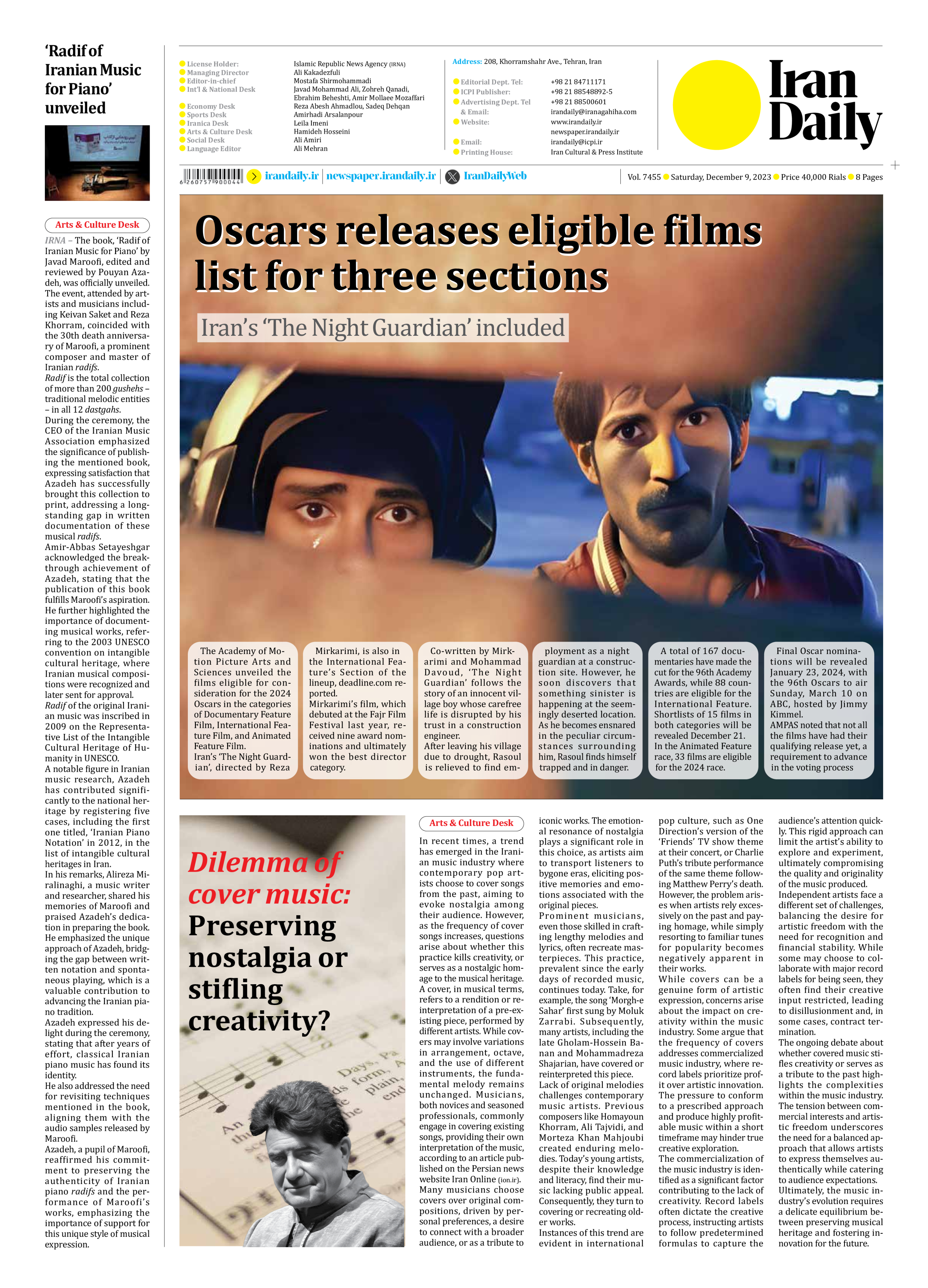
‘Radif of Iranian Music for Piano’ unveiled
IRNA – The book, ‘Radif of Iranian Music for Piano’ by Javad Maroofi, edited and reviewed by Pouyan Azadeh, was officially unveiled.
The event, attended by artists and musicians including Keivan Saket and Reza Khorram, coincided with the 30th death anniversary of Maroofi, a prominent composer and master of Iranian radifs.
Radif is the total collection of more than 200 gushehs – traditional melodic entities – in all 12 dastgahs.
During the ceremony, the CEO of the Iranian Music Association emphasized the significance of publishing the mentioned book, expressing satisfaction that Azadeh has successfully brought this collection to print, addressing a longstanding gap in written documentation of these musical radifs.
Amir-Abbas Setayeshgar acknowledged the breakthrough achievement of Azadeh, stating that the publication of this book fulfills Maroofi’s aspiration.
He further highlighted the importance of documenting musical works, referring to the 2003 UNESCO convention on intangible cultural heritage, where Iranian musical compositions were recognized and later sent for approval.
Radif of the original Iranian music was inscribed in 2009 on the Representative List of the Intangible Cultural Heritage of Humanity in UNESCO.
A notable figure in Iranian music research, Azadeh has contributed significantly to the national heritage by registering five cases, including the first one titled, ‘Iranian Piano Notation’ in 2012, in the list of intangible cultural heritages in Iran.
In his remarks, Alireza Miralinaghi, a music writer and researcher, shared his memories of Maroofi and praised Azadeh’s dedication in preparing the book.
He emphasized the unique approach of Azadeh, bridging the gap between written notation and spontaneous playing, which is a valuable contribution to advancing the Iranian piano tradition.
Azadeh expressed his delight during the ceremony, stating that after years of effort, classical Iranian piano music has found its identity.
He also addressed the need for revisiting techniques mentioned in the book, aligning them with the audio samples released by Maroofi.
Azadeh, a pupil of Maroofi, reaffirmed his commitment to preserving the authenticity of Iranian piano radifs and the performance of Maroofi’s works, emphasizing the importance of support for this unique style of musical
expression.







